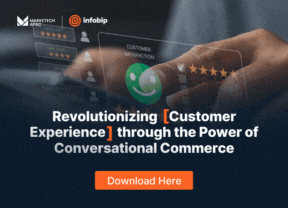In an increasingly complex world, many brands are implementing better frameworks to collect and explore data. Millions of dollars are spent on brand tracking programs, hundreds of slides are created, and significant amounts of meeting time are booked for companies to review the set of insights. However, after these meetings, the insights typically gather dust and are often not meaningfully incorporated into day-to-day actions and strategies.
Given the cost and effort involved, it's time for a paradigm shift. This means moving towards a more prescriptive and focused approach to seamlessly and successfully implementing data understanding into your organization. Here's an approach that makes the process of data understanding and implementation seamless.
ensure understanding
Start by recognizing that you can't accomplish everything in one sweep of your data. Initial insight and analysis reporting should prioritize fully understanding the results. It will take some time for the data to be fully absorbed. You can only act on it if it is truly absorbed. Be sure to start with a deep understanding before committing to implementation.
Model data for clarity
Employing models to cut through complexity and emphasize priorities makes navigating large data sets more effective. This not only helps you understand the data, but also helps align your team towards growth goals. The model serves as a guide, allowing stakeholders to see the big picture and prioritize efforts to drive success.
Consider implementation and use workshops to make this stick
It is essential for brands to have descriptive statistics that clearly show the state of the competitive market. This type of data provides a good foundation for further, more complex analyses. But this is often where most companies stop after an insight and analysis debrief. People return to their desks and continue working as before. After an insight is provided, allow a short period for your team to absorb and reflect. Following this, we begin implementation workshops and spend time planning changes for various business units based on the insights gained. This interactive process of engaging stakeholders and setting measurable actions against timelines ensures a hierarchy of strategic efforts.
Set aside time and budget to organize your insights
First, triangulate all relevant data to get an overview. This may seem simple, but only a few organizations do it effectively. The most successful teams collaborate across disciplines and business units to set what data they have and what common business actions are. Investing in copywriting and creative resources is a must to cherry-pick the insights and actions that matter. Data should inspire people and help them better understand their priorities. Creating a beautifully designed annual insights summary is a great way to condense what your key priorities and actions are.
Cultivate a long-term vision
Create a three-year data plan that shows what insights commissions are coming your way. This forces your team to plan in advance what challenges they can solve with new commissions. Long-term planning often helps with engagement and empowers employees by making them feel engaged rather than passive.
Re-measure and stay focused on continuous improvement
Evaluate the changes stakeholders have made after one year and measure improvements in brand value, market share, and more. Successful results motivate you to stay focused on implementation, optimizing your insights and analytics budget for continued success.
In conclusion, the key to turning insights into action lies not only in what an organization does, but also in how it does it. With a strategic and comprehensive implementation process that follows the steps outlined, organizations can intentionally address the data deluge and turn valuable insights into measurable improvements and sustainable improvements in the dynamic world of marketing. It can definitely lead to success.

This article was written by Taj Samson, Executive Director of Brand Performance in APAC at Landor.
This insight is published below as part of MARKETECH APAC's thought leadership series. What’s next in 2023-2024?. What’s next in 2023-2024? This is a multi-platform industry initiative where APAC marketing and industry leaders share marketing insights and predictions for the coming year..




